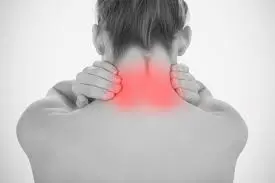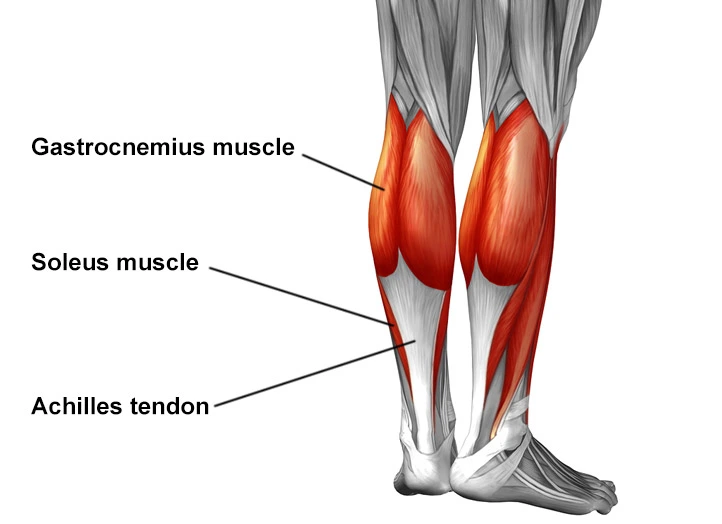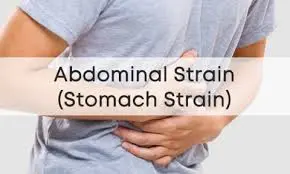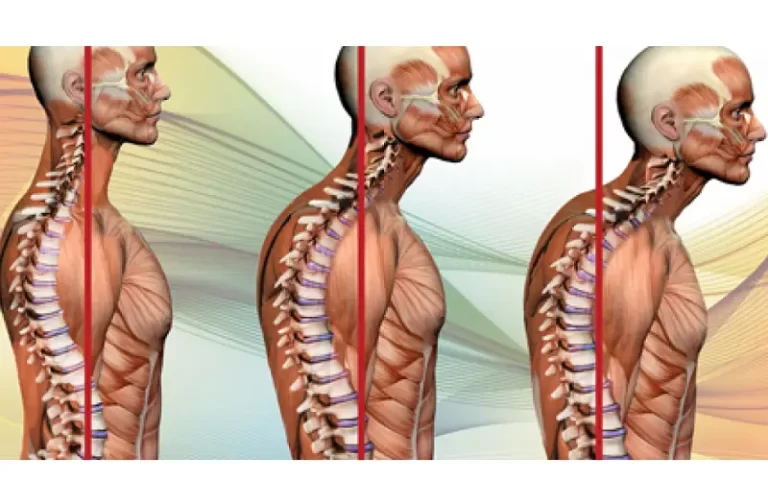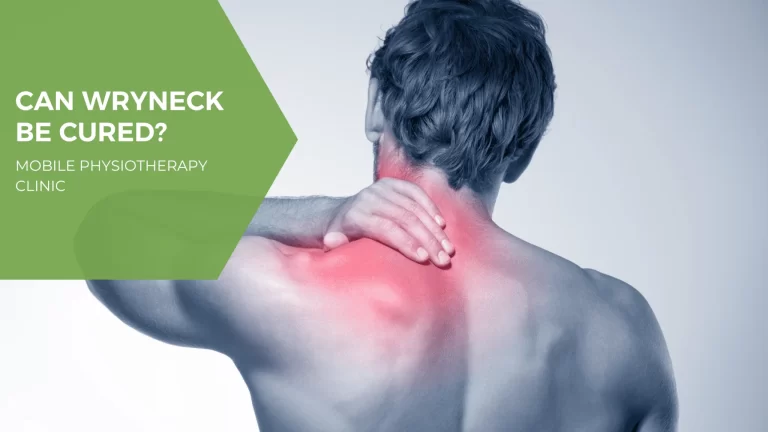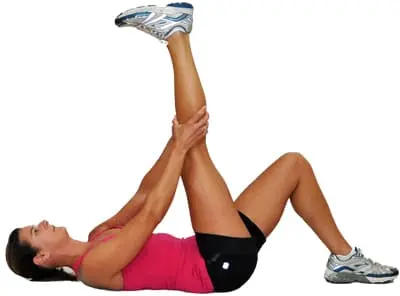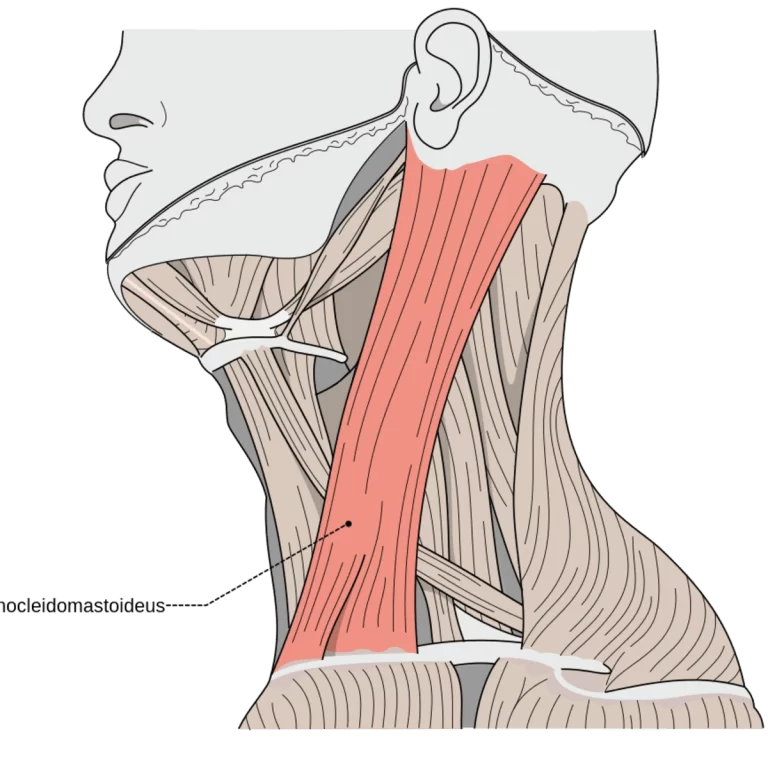Trigger point neck
What is a trigger point neck?
The trigger point neck feels like a knot of stiff spinal muscles that won’t move or relax. When you touch it, it spreads pain to the neck, shoulders, and upper back. Many people relate to this type of pain in the neck as a trigger point, or myofascial pain syndrome when several trigger points exist together but there’s still much that clinicians don’t understand about them.
Trigger points aren’t only found near the neck they can form in muscles all over your body. when trigger points develop in the muscles of your shoulders, upper back, and of course, the neck itself.
What is a Trigger Point?
Trigger points are those tender lumps in the muscles that therapists find. They begin small, and you only know they are there when a therapist gently presses them upon them. Over time they can grow to where they are quite substantial but still not causing pain, but will eventually start shooting pain when they are aggravated.
A trigger point is a sore point in a muscle when you push on it or what most people would be called a knot. You know that bit of the muscle when you are rubbing your tight shoulders that just does not feel right and hurts. When a trigger point is very sensitive it can lead to pain without being pressed on and this is a major cause of muscular pain that most people suffer from. The trigger points are a ‘hypersensitive nodule within a taut band of tissue that can be referred to as pain’.
Referred pain also known as reflective pain, is pain perceived at a location other than the site of the painful stimulus. Pain is reproducible and does not follow myotomes, dermatomes, or nerve roots. There is no specific joint swelling and/or neurological deficits. Pain from a myofascial Trigger Point is a discrete, distinct and constant pattern or map of pain with no gender or racial differences able to reproduce symptoms – referred pain map. Radiating pain is slightly different from the referred pain. for example, the pain related to a myocardial infarction could either be referred to as radiating pain from a chest. Referred pain is when the pain is located away from and/or adjacent to the organ involved. for instance, when a person has pain only in their left arm or jaw, but not in the chest.
Trigger points radiate pain to the affected area when pressure on sensitive points in the muscles is applied to them and sometimes spontaneously with no pressure. and sometimes in seemingly not related body parts. This is called referred pain. Trigger points are discrete, focal, hyperirritable spots situated in a taut band in the skeletal muscles. They produce local pain in a referred pattern and often accompany chronic musculoskeletal disorders.
Acute trauma or repetitive microtrauma may cause the development of stress on muscle fibers and the formation of trigger points. Patients may have regional, persistent pain resulting in a reduced range of motion or movement in the affected muscles. These include muscles used to maintain body posture, like those in the neck, shoulders, and pelvic girdle.
Trigger points may also manifest as tension headache, tinnitus, temporomandibular joint pain, reduce or decrease range of motion in the legs, and low back pain. Palpation of a hypersensitive bundle or nodule of fiber of muscle harder than normal consistency is the physical finding normally associated with a trigger point. Palpation of the trigger point will elicit pain directly over the affected area and/or lead to radiation of pain toward a zone of reference and a local twitch response. many modalities, such as the Spray and Stretch technique, ultrasonography, Transcutaneous electrical nerve stimulation, manipulative therapy, and injection, are used to inactivate trigger points. The trigger-point injection treatment is one of the most effective treatment modalities to inactivate trigger points and provide prompt relief of symptoms.
There are types of trigger points:
An active trigger point: The active trigger point is defined as causing pain when no pressure is placed on them. Active trigger points hurt when you move. and this means they are painful even if you are not massaging them. This is only one of the most common causes of Myofascial pain and it can be experienced in any area of the body. A common example, of active trigger points, is back pain including sciatica, knee pain, neck pain, headaches, and so on. where therapists gently press and the red areas are the referral pain pattern. This is help diagnose where the trigger points are. An active Trigger point is any point that leads to tenderness and referral pain pattern on palpation. Almost always central. Trigger Points are active and some satellite Trigger points are also active but not necessarily all of them.
A latent trigger point: A latent trigger point is a point you gently press on that causes pain and often refers pain to in another area. A Latent trigger points only hurt when someone applies pressure along the raised part of the muscle. This type of trigger point is seen as the precursor to active trigger points. If you have this type of trigger point that gets worse through further strain then they can become active trigger points and that is when you generally feel pain and that need anyone to help you get out of the pain. Inactive or Latent Trigger points can develop anywhere and under fingertips feel like lumps, but they are not painful. It can increase the stiffness of the muscles. It has the potential to be active but is dormant. this trigger point is a dormant (inactive) area that has the potential to act like a trigger point. It may cause weakness of the muscle or restricted movement. These nodules do not lead to pain when touched. They can remain inactive for years and become active when there is stress or trauma.
A secondary trigger point: This is situated in a muscle other than the one that holds the active trigger point. It could be disturbed at the same time as the active trigger point. This is a painful point in the muscle that becomes active when you stress other muscles.
A satellite trigger point: The satellite trigger points are an area where the pain is referred to. For example, if you are to get pain in the shoulder and you found that the trigger point was in the shoulder referring to the elbow, the elbow points would be these types of trigger points. And so you will be also working on these elbow trigger points as they would be involved as well. Primary or Central Trigger Points are those that lead to severe pain locally at the pressure with irradiation according to referred pain map. Generally, they are based around the center of a muscle belly. Secondary or Satellite Trigger Points arise in response to existing central trigger points surrounding the muscles. They usually spontaneously withdraw when the central Trigger point is healed. It can be present in the form of a cluster. This trigger point becomes inactive because it overlaps with the region of another trigger point. This is a painful spot that becomes active because it’s situated near another trigger point.
Active and Passive Trigger Points
There are mainly two types of trigger points that physical therapists treat: active trigger points and passive trigger points. Passive trigger points are simply hurt at their exact location. If you have a painful muscle knot in your calf muscle and someone presses on it, the pain will be felt right where the pressure is on the knot.
An active trigger point refers to pain in another part of your body. If someone presses on an active trigger point in a calf or posterior of the leg. you may feel pain in your leg along with symptoms in your foot.
Regardless of the type of trigger point you have or the fact that we do not fully understand what is happening when trigger points are formed. And you may benefit from physical therapy to help manage your problem.
How Do You Get a Trigger Point in the Neck?
Trigger points are typically caused by mechanical factors, factors that put strain or stress on your muscles. Spinal trauma, such as whiplash from a car accident or a sports-related injury, can cause trigger points to form.
You can also encourage the trigger point to develop by doing repetitive and routine things every day that hurt your spine health over time. For eg, you can strain the neck muscles by holding a poor posture for an extended period (Such as sleeping on an unsupportive pillow or craning the neck while working on a computer) or carrying a heavy handbag that burdens your muscles of the neck, upper back, and shoulders.
What are the causes of trigger points neck?
Some ideas have been shown to cause trigger points. loss of nutrients in the tissue including oxygen. When the blood supply to parts of the muscle is decreased it can cause these nodules in the tissue that then cause pain. Overuse or overactivity of the muscle through exercise, posture, or working at a computer all day without breaks can cause the muscle fibers to become chronically contracted which over time causes pain. An injury is like a strain on the muscle/fascia. and when this heals it may leave trigger points.
- Aging,
- Injury sustained by a fall, birth trauma, or stress.
- Lack of exercise: Generally in sedentary person-years, of which 45% are men,
- Bad posture: upper crossed pattern and lower crossed pattern, swayback posture, telephone posture, cross-legged sitting,
- Muscle overuse and respective micro-trauma, weightlifting,
- Chronic stress conditions: anxiety, depression, psychological stress, and trauma.
- Vitamin deficiencies: vitamin C,vitamin D,vitamin B; folic acid; iron;
- Sleep disturbance or poor sleep,
- Joint problems and hypermobility.
Trigger points develop in the myofascial, mainly in the center of a muscle belly where the motor endplate enters primary or central Trigger Points. Those are palpable nodules within the tight muscle at the size of 2 to 10 mm and can demonstrate at different places in any skeletal muscle of the body. and we all have Trigger Points in our bodies. That can be present even in babies and children. and but their presence does not necessarily result in the formation of pain syndrome. When it happens, Trigger Points are directly associated with myofascial pain syndrome, psychological disturbance, somatic dysfunction, and restricted daily functioning.
What are the symptoms of trigger points neck?
How do you know if it is a trigger point or not?: There are some of the common symptoms you will get that can differentiate trigger points pain. the nodule or band you are pressing on is in a muscle and not on the nerve or bone. The point you press on refers to pain. This is not such nerve pain as when you gently press on a nerve it is like an electric shock or needles or pins. A trigger point referral is not like this. this is more of a dull aching pain that radiates pain. You have muscle pain that won’t go away and even gets worse when you exercise or move. You have chronic muscle pain.
- A patient generally asks for help due to a chronic pain state (ex: headaches, aches everywhere, morning stiffness, Temporomandibular joint syndrome, tinnitus), which, in reality, is often physically away from the active trigger point.
- Weakness of the Muscles or imbalance, altered motor recruitment, in either the affected muscle or in functionally related muscles.
- Changes in Range of Motion (ROM).
- Painful movement. and/or that movement sometimes can exacerbate symptoms.
- Tension headaches, migraines, tinnitus, and temporomandibular joint problem. as accompanying symptoms.
- Postural abnormalities and compensations
- Pain that’s described as deep aching in the localized area of muscles, throbbing, tight, stiff, or vice-like.
- Pain that persists or worsens
- A tender knot in a muscle.Trigger points (a small bump, nodule, or knot in the muscle that causes pain when touched and sometimes when it’s not touched).
- Muscle pain that’s gets worsens when the affected or injured muscle is stretched or strained
- Sleep disturbances due to pain and behavioral disturbances
- Reduced or decreased range of motion in the affected areas (e.g., you may be unable to completely rotate your shoulder).
- Muscle stiffness
- Fatigue
- Headaches
- Dizziness
- Mood swings
- Muscles that are tender or sore.
- Weakness in the affected muscle(s).
- Pain that gets worse in the affected muscle or does not improve with time
- Presence of painful knots in muscles that when pressed produce intense localized or referred pain.Trigger points that activate the pain
- Postural abnormalities or affected postures such as hunching, shoulder rounding, or forward head posture (not aligned with the spine)
What is referral pain?
Some ideas are suggested that the referral pain you experience is happening in the brain. It is such as “crosstalk” you get in electrical cables that are close to each other. These can happen in the brain sensation areas in the brain that are close to each other. an eg, if the trigger point is in the gluteus muscle and refers down the leg area of the leg is close to the area in the brain and that is why you feel it there. A few simple ideas are that the muscle may be attached to the area you feel the referral, which is common and may be transmitted through the fascia or nerves.
Referred pain, also known as reflective pain, is pain perceived at a location other than the site of the painful stimulus. Pain is reproducible and does not follow myotomes, dermatomes, or nerve roots. There is no specific joint swelling and/or neurological deficits. Pain from a myofascial Trigger Point is a discrete, distinct and constant pattern or map of pain with no gender or racial differences able to reproduce symptoms – referred pain map. Radiating pain is slightly different from the referred pain. for example, the pain related to a myocardial infarction could either be referred to as radiating pain from a chest. Referred pain is when the pain is located away from and/or adjacent to the organ involved. for instance, when a person has pain only in their left arm or jaw, but not in the chest.
Is Trigger Points the Same as Fibromyalgia Tender Points?
Trigger points are often confused with the tender point of fibromyalgia. Trigger points and tender points are both localized areas of pain, but they are not similar.
Tender points do not lead to referred pain, or pain that spreads, but trigger points do. Fibromyalgia tender points are also symmetrical they exist on both sides of your body. and trigger points do not emerge in a symmetrical pattern.
But here is where things get complicated: People with fibromyalgia may have both trigger points and tender points. It is not uncommon for people with fibromyalgia to also have myofascial pain syndrome. In those cases, it is important to talk to the doctor about the specific ways to address those different types of pain.
How is a trigger point neck diagnosed?
Trigger points are a common cause of several types of spine pain from neck pain to low back pain but there are still a lot of doctors who have yet to learn about them. Doctors do not have a set definition for trigger points or an understanding of how trigger points produce referred pain.
Trigger points are complex: They are both easy to pinpoint but hard to diagnose. They can directly lead to muscle pain, which may be apparent to detect. But they are elusive because they can mimic other problems. Fibromyalgia and Myofascial pain syndrome are often confused with one another. Jaw pain, earaches, or toothaches that just won’t go away may be caused by a trigger point in the neck.
If you have chronic neck pain that doesn’t have a clear cause, ask your doctor whether trigger points could be behind it. Your doctor may refer you to a physiatrist or other spine specialist to test for trigger points in the upper back, shoulders, and neck.
Analysis of a patient’s medical history is a significant step toward diagnosing any medical condition. A patient’s family history of diseases should be properly checked to look for any signs of fibromyalgia, as it is a significant factor in determining this condition. The patient’s routine of physical activities, demands of the occupation in the case of athletes, manual laborers, or people with desk jobs, sleep routine, diet intake, stress patterns, medications, etc also need to be examined in detail to reach a logical factual conclusion. A thorough examination of the nodules or lumps found on the muscles should be done. It should also be made sure whether the occurring pain is local pain or referred.
There are four main criteria to diagnose the trigger point.
- A taut band within the muscle fiber.
- The area that is sensitive to pressure within that taut band of tissue.
- The point refers to pain or sensation in other areas ie: you gently press on the trapezius muscle and you feel it radiating pain or sensation into the head, causing a headache.
- The twitch response in the muscle is gently pressed on a dry needle.
A visual exam to look for abnormalities of posture.
Your Physicians may order some tests to rule out other conditions and ask you questions about your pain, including:
- Where do you feel the pain?
- How would you describe your pain?
- How often do you experience pain?
- What makes your pain better?
- What makes your pain worse?
- Have you had any recent injuries?
- Do your symptoms get well at certain times during the day?
- What does your work day look like (to look for activities in which there is muscle strain/repetitive activities or recent injuries)?
- Your Physicians may check how you walk (your gait) and your posture to see if there is a balance of muscle use and look for signs of weakness in the muscles. You may also be asked about more health problems that can contribute to this syndrome including how much and how well you sleep and if you feel stressed, anxious, or depressed.
How to Treat a myofascial Pain Syndrome and Trigger Points neck?
Myofascial pain, also called trigger points hyper sensitive areas within the muscle. Trigger points within the muscle can be chronic or develop over time due to repetitive stress on a muscle. This can occur during an activity or lack of muscle activity such as immobilization. active trigger points and latent trigger points are two types individuals may experience. The active trigger points are more common. If an individual has active trigger points, they would present with extreme pain and tenderness over muscle. However, some trigger points may lead to referred pain which symptoms may be felt in other areas of the body.
Treating trigger points and myofascial pain syndrome ranges from simple at-home therapies to injections that the doctor must administer. Because the medical community is still learning about myofascial pain syndrome, no one “magic” treatment will do the trick every time. You may need to explore a few options to find relief from pain.
How Do You Treat a Trigger Point neck?
Ideally, when you treat a trigger point you are pressing on it just hard enough but not too hard. you sorta have to get the feel for it. This can sometimes be difficult to do for yourself. You can hold the trigger points, rub them in a circular motion (either direction), or work the trigger point in a back-and-forth direction. One method may provide a better result than the other on a case-by-case basis. Apply pressure or rub out the trigger point for at least ten-fifteen seconds. If the pain is improving as you treat that point then continue until there is no further relief. And sometimes you can feel the trigger point “wash away” beneath your fingers and disappear.
Some practitioners use modality and a few tools such as wooden or metal spoon-shaped devices and other hand-held appliances, mechanical vibration, electro-stimulation, laser therapy, dry-needling, or injection to treat a trigger point. However some of these can be beneficial, preference is to use the hands as much as possible – it allows you to feel the area. you are working on, and often the dissipation or release of the trigger point can be felt. Using a hands-on approach also decreases the chances of pressing too hard and creating further damage or bruising, as well as not pressing hard enough or long enough resulting in inadequate results. If the hands are not strong enough or you are not able to reach a suspected trigger point, then tools such as a foam roller, tennis ball, golf ball, Thera Cane, and/or The Stick, may be beneficial.
Different people with different level of injury requires that specific treatment. Chronic conditions are may require intense treatment over a long period to see improvement. Training is given for the maintenance of a good or normal posture and balancing the body mechanisms while lifting heavy objects. Regular sessions of exercise are given by your therapist, along with the encouragement of stretching and remaining daily life physical activities as well. There are several techniques of massage, such as Deep Stroking Massage which is done rhythmically in only one direction. Such massaging over the tense of the muscle strengthens the muscles’ flexibility and endurance, along with easing the pain.
Conservative treatments are works for most trigger points or myofascial pain. Individuals experiencing myofascial pain may be recommended for physiotherapy. Some of the therapy treatments for trigger points may include soft tissue mobilization or massage and stretching. For athletes, deep tissue massages, the use of a foam roller, and stretching daily will help treat and reduce the symptoms of a trigger point. and medical Massage also can be very helpful as well as acupuncture.
Methods that employ a rhythmic contraction and relaxation of muscles are Reciprocal Inhibition, Contract-Relax and/or Hold-Relax, Post-Isometric Relaxation, etc. These physiotherapy treatments maintain the joint range and allow muscles to exert their maximum power without leading to fatigue. other specific techniques are included Myotherapy, Muscle Energy Technique, Ultrasonography, Muscle Energy Technique, and Neuromuscular Technique.
Medications
Various muscle relaxant has been used to reduce symptoms of myofascial pain. These are often sedating or have other side effects, so their use should be limited and also used in conjunction with a good physiotherapy program. Medications such as Valium (diazepam) should be avoided as they cause sedation and can be habit-forming. Milder forms of pain may be relieved by NSAIDs(nonsteroidal anti-inflammatory drugs) like aspirin, ibuprofen, and naproxen. Both Tylenol (acetaminophen) and NSAIDs relieve pain caused by muscle pain and stiffness, and additionally, NSAIDs reduce inflammation (swelling and irritation).
Physical Therapy Management
Physiotherapy treatments may include:
Physical therapists can treat trigger points in many ways, including massage, heat, electrical stimulation, and ultrasound. They may also cover the trigger point area in a cooling spray before performing targeted stretches to relax and relieve the muscle contracted.
Physical therapy involving gentle stretching and exercise may be useful for recovering the full range of motion and motor coordination. Once the trigger points are gone, muscle-strengthening exercises can start, supporting the long-term health of the local muscle system. A physiotherapist can devise a plan to help relieve your pain based on your signs and symptoms. If you have a trigger point in the calf muscles, treatment is going to be more successful if you see your healthcare provider early after symptoms develop before trigger points are established. In some chronic cases of myofascial pain, combinations of physiotherapy, myofascial release therapy, trigger point injections, or massage are needed. Many treatments are available and your medical professional will likely use a mixture of the following to manage your pain and restore affected muscles. Physical therapy to relax, stretch and strengthen muscles. Myofascial release(MFR) techniques and trigger point therapy may be helpful for your muscle knots and trigger points. Myofascial release is thought to help properly align the fascia surrounding your muscles. This can help improve circulation and the normal movement of your muscles.
Trigger point therapy is performed by having your Physical therapist press and hold on top of the trigger points in your muscles. This temporarily cuts off circulation to a tissue. This cutting off of circulation increases a chemical called “nitric oxide in the tissue”. Nitric oxide signals the body to open up microcapillaries, thus bringing in more blood flow and breaking a pain spasm pain cycle.
If possible, everyday-life factors that arouse the emergence of a TrPs(Trigger Point) must be eliminated or decreased,
Postural training and education about postures and lifestyle,
Passive stretching and Foam Roller stretching, a few times a day,
Self-massage, sometimes a day, and especially Deep Stroking Massage, done rhythmically and in only one direction,
Strengthening: at the start only isometric and then isotonic exercises,
Ischemic Compression Technique: In which, the term has been used to describe treatment in which ischemia is induced in the TrPt zone by applying sustained pressure. Although, this principle is questionable since the nucleus of the TrP intrinsically presents important hypoxia.
This technique aims to free the contracted sarcomeres within the Trigger Point. The pressure applied should be sufficient to produce gradual relaxation of the tension within the Trigger Point zone, without causing pain. Yet both techniques show imitate significant improvement in the range of movement after treatment.
If you seek out care from a physical therapist for trigger point therapy, do not go to eliminate your trigger points. Rather, focus on learning strategies to help to manage painful trigger points. Physical therapy exercises for muscle knots can help you manage your pain. and help determine the underlying body mechanics that may be making the muscle knots painful.
Physiotherapy helps to relieve trigger points in the muscles and may involve:
There are two different approaches to the treatment of myofascial trigger points. There are non-invasive techniques like Therapeutic Ultrasound, Low-level laser therapy, and TENS(Transcutaneous Electrical Nerve Stimulation).
Massage therapy
Licensed massage therapists are trained to muscle pain relieve, and deep-tissue massage may relieve an irritated trigger point. If you have chronic trigger points and myofascial pain syndrome, regular massage appointments may help reduce their occurrence.
There are some types of massage treatments that can relax myofascial trigger points. These include:
- passive rhythmic release
- active rhythmic release
- shiatsu (acupressure)
- trigger point pressure release
Massage techniques increase blood flow and warm up muscles. This can help reduce stiffness and relieve pain. your therapist applied pressure on your trigger points, which will aggravate the pain and then release the muscle tension. A physiotherapist may massage your affected muscle to help relieve your pain. A physical therapist may use long hand strokes along your muscle or place pressure on specific areas of your muscle to release tension. Massage therapy using trigger-point release techniques could also be effective in short-term pain relief. massage may improve the condition.
Pain management
Low-level light therapy / cold laser
lasers help to stimulate the release of pain-relieving chemicals. low-level light therapy is also known as cold laser, in which the trigger point is exposed to near-infrared light.
Ultrasound therapy
Ultrasound therapy uses sound waves to increase blood circulation and warmth, which may promote healing in soft tissues affected by a trigger point in the calf muscles. These machines transmit sound waves into the soft tissue through a sound-conducting gel applied to the skin. The sound waves can heat up and relax muscles, increasing blood flow, and removing scar tissue. The pain-relieving effects may be minimal. But, this treatment may reduce or diminish stiffness and increase mobility if done before stretching. Pulsed ultrasound is in which sound waves are used to penetrate muscles or soft tissues. This therapy has been successfully used for pain associated with rheumatoid arthritis, so it may be worth discussing with your doctor.
TENS(Transcutaneous electrical nerve stimulation)
Transcutaneous electrical nerve stimulation involves sending low-voltage electric signals from a small device to the painful area through electrodes attached to your skin.
Strengthening: initially only isometric exercises and then isotonic exercises.
Ischemic Compression Technique: the term has been used to describe treatment in which ischemia is induced in the Trigger point zone by applying sustained pressure. Though, this principle is questionable, since the nucleus of the Trigger point intrinsically presents important hypoxia. Simons described a similar treatment modality, though without the need to induce additional ischemia in the Trigger point zone (Trigger point Pressure Release). This technique aims to free the contracted sarcomeres within the Trigger point. The amount of pressure applied should suffice to produce gradual relaxation of the tension within the Trigger point zone, without leading to pain. Yet both techniques show imitate significant improvement of the ROM after the treatment
Myofascial release therapy
Myofascial release therapy involves gentle fascia manipulation. Most of the myofascial release treatments take place during the massage therapy session. your therapist will start massaging and stretching the areas that feel rigid with light manual pressure. your therapist then aids the tissue and supportive sheath in releasing pressure and tightness. The process is repeated multiple times on the same trigger point and another trigger point until your therapist feels the tension is fully released.
These areas where the massage therapist is working may not be near where the pain originates or where you feel pain most prominently. Myofascial release works the broader network of muscles that might be leading to the pain. It tries to reduce tension throughout your body by releasing trigger points across a broad section of the muscular system. Myofascial release therapy can also be done at home using a tool like a massage gun to apply pressure to the muscles and interconnective tissues or a foam roller. This form of myofascial release can be especially helpful for athletes struggling with fascial tension as a result of repetitive muscle use.
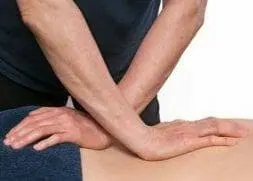
Myofascial Release is a hands-on treatment performed on the skin with no creams or oils. The gentle tension between a therapist’s hands and a patient’s skin is what allows access to the fascia in a way that the gliding effect of the traditional massage cannot achieve. The myofascial release incorporates many new types of body manipulation to improve function and movement.
There are some ways you can release a trigger point. The most common way is using sustained pressure with the thumb, fingers, elbow, or a massage ball or some tool. Dry needling is also a form of trigger point therapy that is becoming more extensive as its effectiveness is being seen.
Trigger point therapy is a therapy designed to speed up recovery from relieving pain and injury. The technique involves applying pressure to areas of muscle tightness or ‘knots’. This helps to reduce muscle tension and promote healing. The pressure of trigger point therapy affects some of your nerves and muscles (specifically the neuromuscular system) so pain decreases. This encourages the muscles to return to their normal state and reduces pain and tightness. and your physiotherapists are well experienced in using this alongside other management strategies to assist with a wide range of conditions.
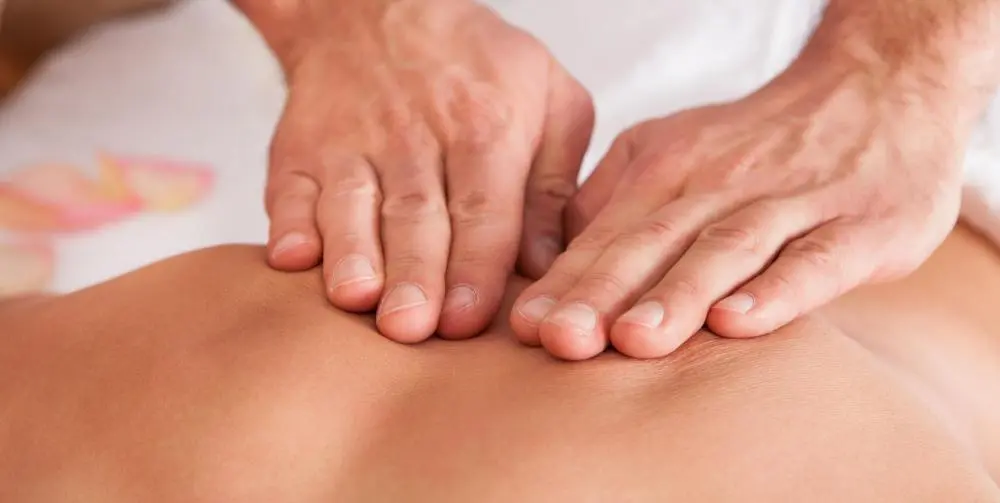
Manual therapy for Trigger Points: this generally involves sustained pressure on the trigger point until it releases. If you find the nodule within the taut band of tissue you hold pressure on it until the pressure starts to decrease. This may take from thirty seconds to a few minutes. If the trigger point is chronic then it may take multiple sessions to release this pain. You can try this will the ball to help to release the trigger point. This method is also called ischemic pressure.
Trigger point dry needling
Researchers are not exactly sure how dry needling relieves trigger points pain, but it involves injecting an empty needle and moving it around. This therapy is thought to encourage blood flow to the trigger point muscle area, which may reduce muscle contraction. This therapy may also help block pain signals near the trigger points site, but more research is needed to confirm this.
The dry needling technique is one of the fastest ways to inactive trigger points. Dry needling, in which the doctor will insert a thin needle directly into and around your trigger point, move it around, and poke it in and out. dry needling technique involves inserting a needle into several places in and around the trigger point. It can be quite painful and helps break up muscle tension, but it’s one of the most effective ways to inactivate a trigger point and reduce the pain. Acupuncture also appears to be helpful for a few people who have this trigger point. some therapists use acupuncture needles, which are smaller and less painful than hypodermic needles. There are some key differences between dry needling and acupuncture. pushing thin needles into the trigger point to reduce tightness, increase blood flow and relieve pain. A systematic review concluded that dry needling for the treatment of this pain syndrome in the lower back appeared to be a useful adjunct to standard therapies, but that clear recommendation could not be made because the published studies were small and of low quality.
Trigger Point dry needling is the procedure in which a disposable, sterile, solid filament needle is inserted into the skin and muscle directly at a myofascial trigger point. the needle is inserted into a contracted painful knot in the muscle to create a local twitch reflex which is both diagnostic and therapeutic as it is the first step in breaking the pain cycle research shows will diminish muscle contraction, reduce chemical irritation, improve flexibility and decrease pain. myofascial trigger points consist of multiple contraction knots, which are related to the production and maintenance of the pain cycle.
Stretching techniques (e.g. spray and stretch)
A physiotherapist may lead you through gentle stretching exercises to help ease the pain in your affected muscle. If you feel trigger point pain when stretching, the physiotherapist may spray a numbing solution on the skin. Stretching helps many people with a trigger point in the calf muscle. Some physiotherapists apply a cold, numbing spray to the muscle area before leading someone through stretches. There are also some gentle stretches and exercises you can try at home to decrease pain.
“Stretch and spray” technique: This technique involves spraying the muscle and trigger point with a coolant and then slowly, manually stretching the muscle.
Heat: Applying heat, via a hot pack or a hot shower, can help relieve muscle tension and reduce or decreased pain.
Cold pack
Acupuncture and relaxation therapies, including cognitive behavioral therapy and biofeedback also good for improving sleep and reducing anxiety.
Posture training
Which, Improving your posture can help relieve myofascial pain, particularly in your neck muscle. Exercises that strengthen the muscles surrounding your trigger point will help you prevent overworking of any one muscle.
Exercises help change the posture of your body and the way your body moves.
Kinesiology taping
Many physical and manual therapy techniques such as:
- Post-isometric relaxation
- Active Release Techniques
- Trigger point pressure release
- Muscle energy techniques
What are trigger point injections?
If you have myofascial pain syndrome and still experiencing recurring trigger points despite trying your therapies above, your doctor may recommend trigger point injections. These injections are considered a later-stage therapy for trigger points that is, the doctor may recommend you try less invasive treatments, like massage, before moving on to injection therapy. Your doctor may also prescribe an injection in conjunction with an exercise or physical therapy program for maximum relief and effectiveness. This should not be repetitively performed, and steroid medications should not be included in what is injected. generally, just a saline injection with some Novocaine (procaine) is all that is needed for these injections to have a good effect on pain reduction and facilitate better rehabilitation.
Trigger point injections may help relieve chronic muscle pain, including pain in the neck. These injections target “knots” in the muscles called trigger points that can cause pain, stiffness, and reduced range of motion. It involves injecting an anesthetic or, in a few cases, a steroid into the affected area. Trigger points can develop in any muscle in the body that experiences a sudden injury or repeated trauma. the neck, shoulders, and back are among the most common areas to develop trigger points. Medical professionals can identify trigger points by feeling bumps under your skin that are tender to the touch.
Trigger points are irritable areas in the muscles caused by overuse or sudden stress. In your neck and upper back, they generally develop in the following muscles:
- Rhomboid: Located in the upper back, a rhomboid muscle connects the shoulder blades to your rib cage and spine. It also helps them maintain an erect posture. Rhomboid trigger points may be felt under the neck, between the spine and shoulder blades.
- Trapezius: The trapezius muscle is a large band of muscle that spans the upper back, shoulders, and neck. You can feel trigger points in your trapezius at the back of the neck and/or along the top of your shoulders.
- Levator scapulae: Levator scapulae muscle is at the back and side of the neck, which is where you can feel the trigger point pain.
Trigger point injections are a potentially effective treatment option for reducing pain in the muscle. They involve injecting a small amount of an anesthetic for pain relief.
Are there any risks?
Trigger-point injections are generally safe and rarely cause major complications or side effects.
If there are side effects, they are generally minor and may include:
- pain
- slight bleeding
- skin irritation
- Less common side effects can include:
- muscle or nerve damage
- muscle spasms
- skin infection
- A few people may experience pain flare-ups after their injection. You can generally treat these flare-ups with cold packs and over-the-counter (OTC) pain relief medications.
Trigger-point injections may not be appropriate if you have an active infection in an area treated or if you have a fear of needles.
Other treatments for muscle pain
Many treatment options are available for muscle pain. If a trigger point injection does not provide relief of pain, your doctor may recommend trying other treatments such as:
- stretching
- targeted exercises
- posture changes
- anti-inflammatory drugs
- muscle relaxants
- physical therapy
- surgery
Trigger Point Exercises
Here are two exercises that can help relieve a few types of trigger point pain:
- Foam Roller
- A full-length, 6-inch diameter foam roll can be used to work out a few of the trigger point pain that often accompanies neck pain. Place the foam roll on the ground.
- Lie on it lengthwise.
- Place the hands on the hips.
- Roll slowly sideways keeping the torso parallel to the ground until the foam roller rolls over your scapular muscles where the sore trigger points are located.
- Slowly roll twenty times to each side.
- Racquetball
- The racquetball can be used to self-massage shoulder blade trigger points as well.
- While leaning with an upper back against the wall, place the racquetball between the tender muscles of the shoulder blades and the wall. Using the legs to move your body, roll the ball up and down on top of the muscles for about 2 minutes.
Trigger Points in your Neck: “Knot” as Clear-Cut as You Thought
Most of us have experienced a tight bunch of muscle around the neck, but trigger points are still shrouded in mystery when it comes to diagnosis and treatment. By practicing proper/good posture and healthy spinal mechanics, you can help avoid trigger points and myofascial pain syndrome. If you experience chronic trigger points, being open to different therapies—including massage and physical therapy—may help keep the pain from interfering with your daily activities.
Other treatment options include:
- Dietary changes to reduce inflammation and prevent ingredients that seem to trigger pain
- Heat
- Behavior modification such as exercise, posture, workstation setup, yoga, meditation, sleep habits, etc.
- Physiotherapy, including steps to realign posture, as needed
- Acupuncture: Acupuncture releases the trigger points by finding the most tender point and a tight band of the muscle and using an acupuncture needle to poke the muscle and get it to involuntarily contract. Releasing the trigger point gets the muscle out of the shortened state and generally, after some contractions, it softens and remains in a more elongated and relaxed state. As an acupuncturist, I can feel the resistance at the needle soften as the trigger point and muscle is released. A Few patients describe the feeling as “melting away tightness and tension” or “popping a tension bubble.”
Home advice
One of the best things you can do for the trigger points is to learn to self-manage the condition. This may include performing self-massage therapy trigger point techniques. These Treatments are included:
- Use a Back-Nobber to press into the trigger points
- Rolling over a tennis ball to press into the trigger points
- Foam rolling over the muscles to help smooth out fascial tissue
- One thing is for certain-engaging in an active treatment program of posture correction and exercise is superior to passive treatments for the trigger points. Check-in with a physical therapist for a complete assessment of your condition to learn about self-care strategies to manage your trigger points.
The pain of the trigger point may be extremely bothersome, and you may want to jump into an at-home fix immediately. But before you start any home therapies, talk to a trained professional doctor, massage therapist, or physical therapist to pinpoint the location of the trigger point so you can effectively treat it.
Trigger points are generally treated by massaging the area, which can be a challenge when they are in a hard-to-reach place near the upper back. If you can’t reach the trigger point with the hand, slowly and gently rolling over a golf ball or tennis ball can provide quick relief.
These Treatments are also you can do at home including:
- Heat as in a heating pad. Some people benefit from cold/ice packs.
- Exercise Specifically weight-bearing exercises to help strengthen muscles, stretching exercises to stretch muscles, and aerobic exercises to get more oxygen into the muscles.
- Over-the-counter(OTC) pain killers such as acetaminophen or NSAIDs like ibuprofen or naproxen. Don’t take these drugs if you are taking analgesics or NSAIDs prescribed by your doctor.
- Relaxation techniques include yoga to stretch, decrease stress, and relax the muscle, breathing exercises, and meditation.
- changes in your diet avoid foods known to cause inflammation.
- Soaking in warm water.
- Massages.
- The duration of this pain syndrome varies from person to person. With treatment, it may go away after a day or some weeks, but it can take longer for some. How fast this pain resolves depends on some factors, including:
- Your general health.
- Diet.
- Amount and quality of sleep.
- Take care of yourself if you have this trigger point in your calf muscles. Self-care measures to maintain your body healthily may make it easier for you to concentrate on coping with your pain.
Try to:
- Exercise: Gentle exercise can help you cope and improve with pain. When your pain allows, get moving. Ask your doctor or physiotherapist about proper exercises.
- Relax: If you’re stressed and tense, you may experience increased pain. Find ways to relax. Meditating, talking with friends, or writing in a journal can all be helpful.
- Take care of your body: Eat a healthy diet of vegetables and fruits. Get enough sleep so that your wake rests. Take care of the body so that you can put your energy toward coping with your pain.
DISCLAIMER:
This article is intended or purposeful for your general informational purposes only and does not address particular circumstances. it is not a substitute for professional advice(or guidance) or help( or assistance) and should not be relied on to make decisions of any kind. A few or any actions you take upon the information presented in this article are strictly at your own risk and responsibility.

